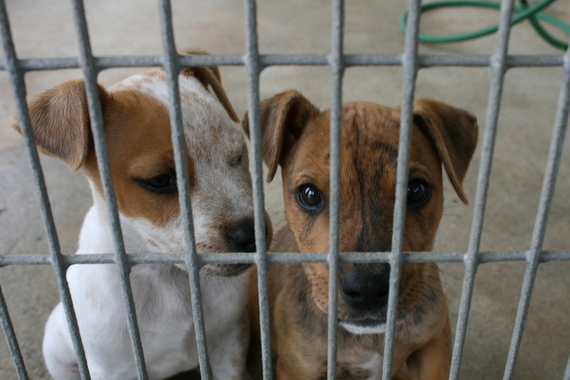Image: Stock Photo. FreeImages.com/Vee Bee
Animals as well as humans have suffered from greed and neglect across the former Soviet Union, animals-rights activists say.
Some of the worst offenders have been organizations owned by the government, such as zoos and circuses.
A film made secretly in 2013 showing St. Petersburg State Circus trainers abusing animals sparked a national debate on the question of animal cruelty in Russia.
Meanwhile, starvation of animals at an Armenian zoo and the flood deaths of animals at a Georgia zoo -- both in 2015 -- have raised the issue of inhumane treatment of zoo animals.
The animal-rights organization Vita secretly filmed the St. Petersburg circus trainers abusing animals.
The footage, which went viral after being posted on the Internet, documented cruelty to monkeys, a kangaroo, a poodle and an ostrich.
So many animals were involved that it raised the question of how many others were being mistreated.
The film shows two monkeys, Johnny and Kuzya, being lashed with a whip, shaken, punched and slammed against the floor by trainers displeased with the way they responded to commands.
The kangaroo, which was rehearsing a boxing act, also was whipped, as were the poodles.
A trainer kicked the ostrich.
The film created a national furor. Some viewers said they had seen similar cruelty inflicted on other circus animals. Others called for circuses to stop using animals in their acts.
Making the scandal even more high-profile, two of the trainers in the Vita film -- Murad Abdullayev and Rauf Rasulov -- were Honored Artists of the Russian Federation.
Rather than admit the cruelty, the circus went on the attack.
It said the footage had been spliced together from snippets to create a fake reality. The abusive trainers were not circus employees but visiting artists, the circus contended.
It also questioned whether the film was shot at the St. Petersburg circus grounds, saying it could have been shot anywhere.
The circus also enlisted officials of other circuses to defend the way it punished its animals.
In the same way that parents must sometimes use corporal punishment on children, some circus animals "must be beaten -- otherwise they won't understand," asserted Askold Zapahny, artistic director of the Moscow Bolshoi Circus.
Although the scandal provoked outrage, it had little impact on circus practices in Russia. Most circuses continue to use animals, and organizations such as Vita contend that trainers still abuse them.
The same kind of profit motive that prompts circuses to continue using animals led to a wealthy Armenian starting a zoo in Gyumri, our country's second-largest city.
When the zoo failed to turn a profit in 2015, he stopped spending money to care for the animals, which began starving. The pain in their bellies became so intense that some banged their heads against their cages.
Concerned Gyumri residents begged the government for money to save the animals, and the zoo director, Stepan Vardanyan, asked that they be sent to the zoo in Yerevan, the capital.
But Armenia is a poor country, and starving zoo animals are not a priority.
Those concerned about the animals continue to scramble for money to keep them alive.
Half the animals in Georgia's biggest zoo -- in the capital of Tbilisi -- died during a flood last year.
The water killed many, but law-enforcement officers shot some of those that escaped, including lions, tigers and wolves.
Many of the shootings were unnecessary because the animals were not posing a threat, animal-rights groups maintained.
If the zoo flooding had been a one-time situation, the animals' deaths could have been chalked up to an act of God.
But the zoo, which sits on low ground, has been flooded three times in the past four decades.
Government officials have long known they needed to move the zoo. In fact, an alternative site on high ground has been identified.
But the move hasn't been made because officials said it would have taken half a million dollars.
Meanwhile, the animals that survived the latest flood are vulnerable to the next one.
Given the widespread human-rights abuses in the former Soviet Union, we all know it can be tough to be a human there.
But as the cases in St. Petersburg, Gyumri and Tbilisi indicate, it can sometimes be even tougher to be an animal.
Armine Sahakyan is a human rights activist based in Armenia. A columnist with the Kyiv Post and a blogger with The Huffington Post, she writes on human rights and democracy in Russia and the former Soviet Union. Follow her on Twitter at: www.twitter.com/ArmineSahakyann

